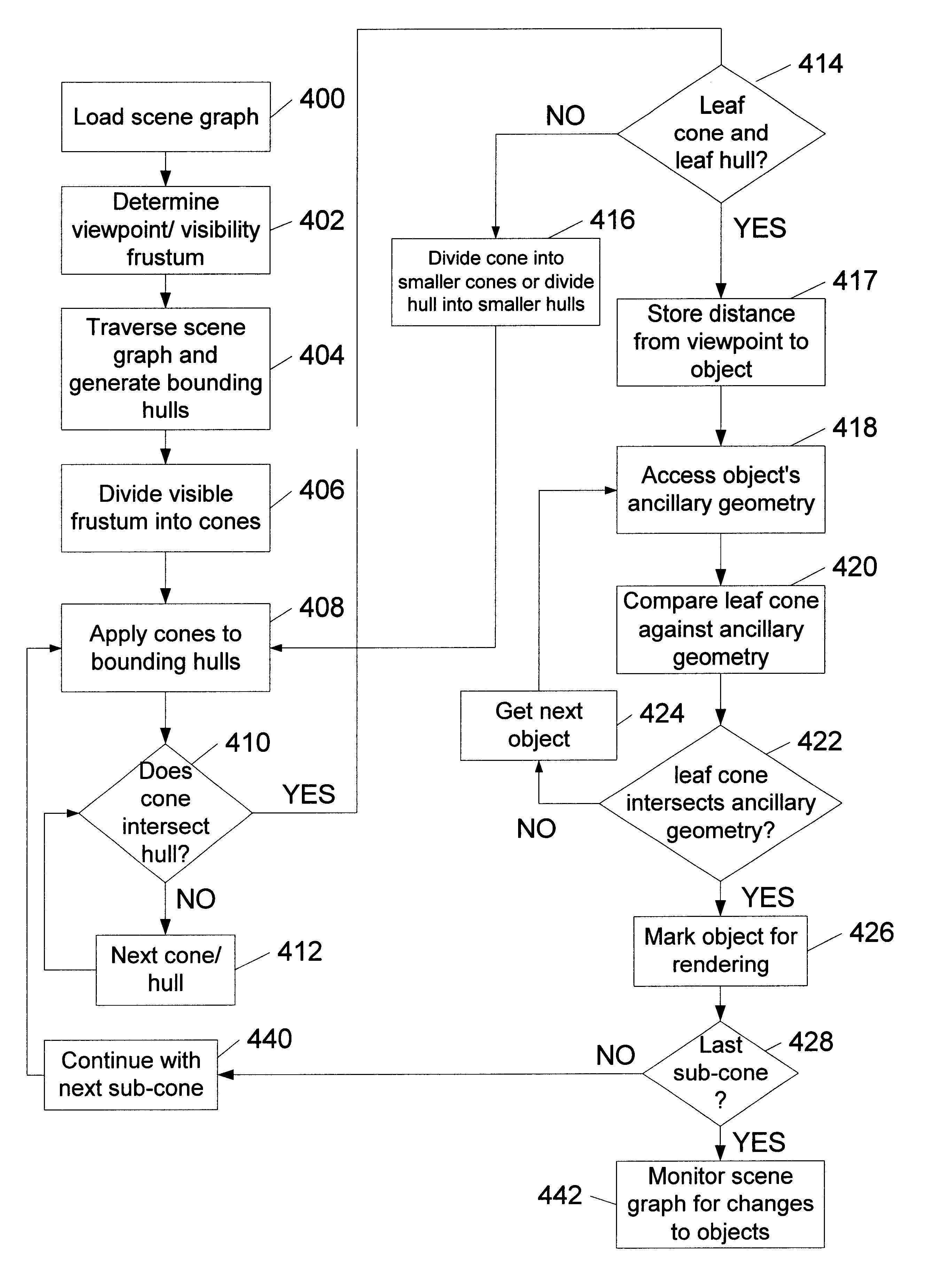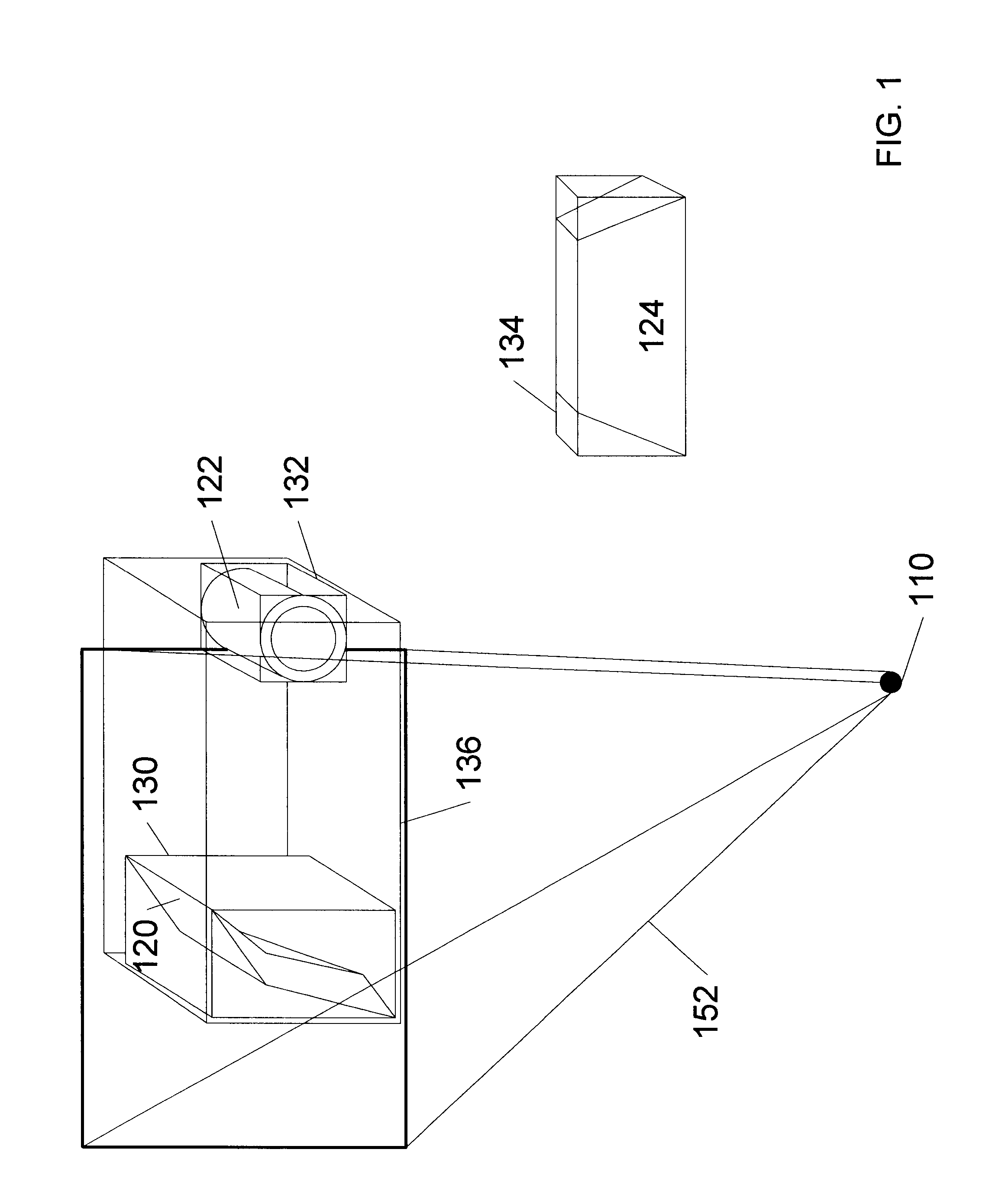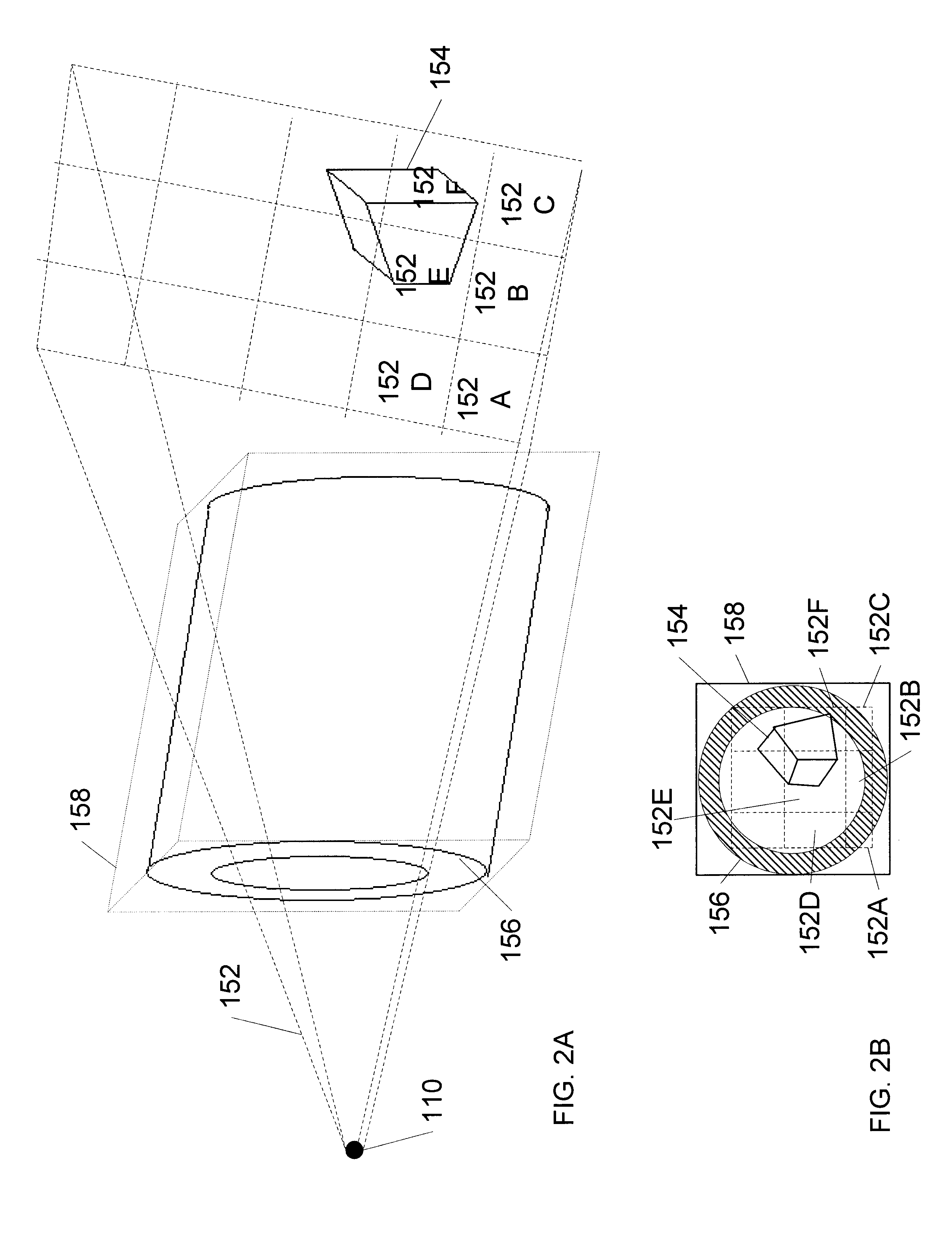Using ancillary geometry for visibility determination
a technology of ancillary geometry and visibility determination, applied in the field of computer graphics, can solve the problems of wasting resources, wasting resources, and not being able to view more and more complex scenes at reasonable frame rate, and outpacing the ability of graphics hardware systems to display them at reasonable frame ra
- Summary
- Abstract
- Description
- Claims
- Application Information
AI Technical Summary
Benefits of technology
Problems solved by technology
Method used
Image
Examples
Embodiment Construction
A space of any dimension may be represented as a union of cones. Convex polygonal cones may be convenient for such representations. A convex polygonal cone is a cone whose cross section is a convex polygon. A convex polygonal cone C may be expressed as the solution set of the vector inequality of the form
Sx.ltoreq.0,
where the rows of matrix S are normal vectors defining the planar boundaries of the cone C, where x is a vector variable. The vector inequality a.ltoreq.b between two vectors a and b is true if and only if a.sub.i.ltoreq.b.sub.i for all i. When S is empty, the cone C equals the entire space. When S has only one row, the cone C is a half-space. Other characterizations of a cone are possible and other embodiments based on these other characterizations are contemplated.
Most objects may be bounded by a polytope hull. A polytope hull is a convex solid whose surfaces are planar. A polytope hull H may be expressed as the solution set of the vector inequality
Ax.ltoreq.b,
where th...
PUM
 Login to View More
Login to View More Abstract
Description
Claims
Application Information
 Login to View More
Login to View More - R&D
- Intellectual Property
- Life Sciences
- Materials
- Tech Scout
- Unparalleled Data Quality
- Higher Quality Content
- 60% Fewer Hallucinations
Browse by: Latest US Patents, China's latest patents, Technical Efficacy Thesaurus, Application Domain, Technology Topic, Popular Technical Reports.
© 2025 PatSnap. All rights reserved.Legal|Privacy policy|Modern Slavery Act Transparency Statement|Sitemap|About US| Contact US: help@patsnap.com



